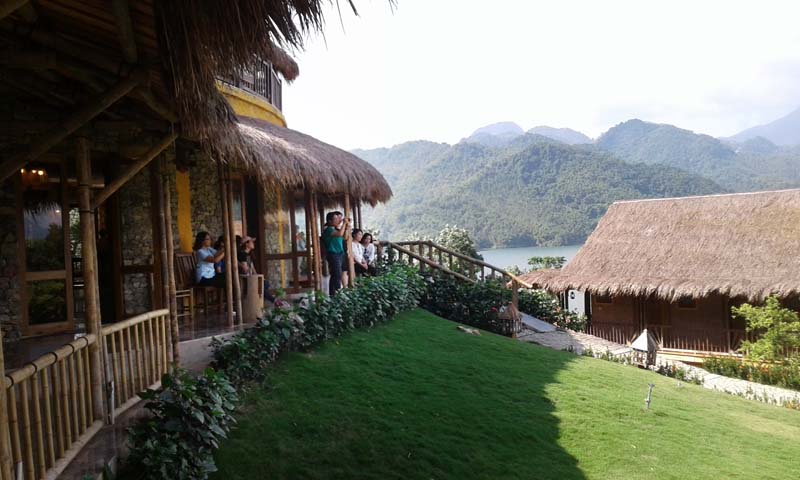



The Hideaway tourism site in Tan Mai commune (Mai Chau district) is a destination favoured by many foreign tourists.
I have never thought I would one day have a chance to set foot in the places the names of which have been made immortal by poetry. Some places remain inaccessible, located thousands of metres high on mountains such as Sai Khao, Muong Lat, Pha Luong as described in the poem "Tay Tien” (Marching West) by Quang Dung. Other places now have become familiar for many. I have come to a Mai Chau full of fragrant smell of steamed rice as Quang Dung remembers in his poem.
Mai Chau in front of me is as quiet as in the poem. Some weaving looms are turning out colourful brocade for the skirts of Thai and Muong girls, which make visitors hesitant to leave.
Further in sight are the bare fields after harvest, the stilt houses hidden in green trees, and rows of bamboo embracing a small stream. Mai Chau now is divided into three obvious areas: a town with hotels and shops not second to any other town; rural villages that recently got a facelift, where stilt houses have been converted into lodging houses or shops selling all sorts of ethnic tools or utensil like bow and cross-bow, papoose and gong; and the remaining area with fields and orchards where stilt houses seem to be floating in the sunlight, which I like the best.
The road to Mai Chau runs through white clouds and while stone. Thung Khe Pass is like a warm hand, where bamboo tubes filled with rice are cooked in a bonfire. Sitting beside a small bamboo table with a small fire at my feet, I took a bamboo tube and gently peeled off the bamboo strips, revealing the white rice inside. I took a small piece of the rice, dipped it into the mixture of sesame and salt and put it in my mouth, then slowly chewed the rice to absorb its fragrance.
Passing Thung Khe, the road wound along the mountain. I stopped at a spot at the roadside, which gave the best view of Mai Chau. Several foreign visitors were also there, taking photos and looking for a long time the mountain, roads, fields and houses below.